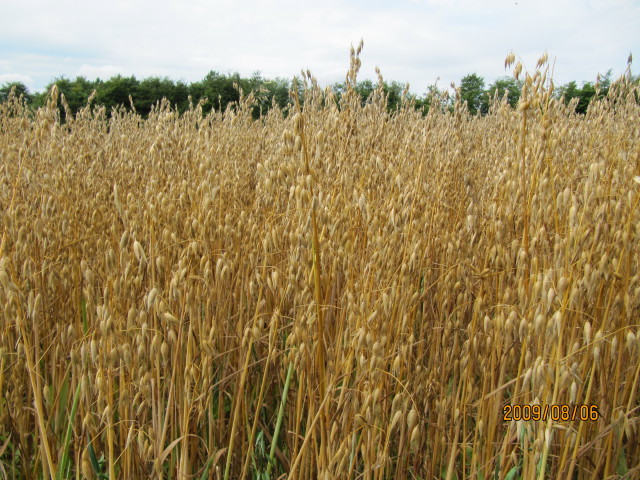Oat (Avena sativa)
On this page... (hide)
- 1. Description
- 2. Obtainment
- 2.1 Growing
- 3. Uses
- 3.1 Food
- 4. More
- 5. 'Souls
| Common Name | Oat |
| Latin Name | Avena sativa |
| Icon(s) |   
|
 | |
|
Oats | |
1. Description
Oats grow best in temperate regions. They have a lower summer heat requirement and greater tolerance of rain than other cereals, such as wheat, rye or barley, so are particularly important in areas with cool, wet summers.
2. Obtainment
Very easy. Oats were widely produced to the west of New Brunswick -- Canada was the second producer of Oats worldwide. It is likely some minor oat production also went on in Nova Scotia, either privately or on larger-scale farms, and can still be found growing wild in 'Souls.
2.1 Growing
Oats are sown in the spring or early summer in colder areas, as soon as the soil can be worked. An early start is crucial to good yields, as oats go dormant in summer heat. Oats are cold-tolerant and are unaffected by late frosts or snow. The vigorous growth of oats tends to choke out most weeds, except a few tall broadleaf weeds, such as Ragweed or Cleaver.
3. Uses
- Straw: Oat straw is prized by cattle and horse producers as bedding, due to its soft, relatively dust-free, and absorbent nature.
- Medicinal: Oat extract can also be used to soothe skin conditions.
3.1 Food
- Oats have numerous uses in food: oatmeal, oat flower, cakes, bread, cereals.
- Brewing beer
- Livestock: One of the most common uses is as livestock feed: horses, cattle, chicken. Oats typically make up a fifth of the daily diet of domestic horses. The oat hull may be crushed, ground flour, or fed whole, given alone or as part of a blended food.
4. More
5. 'Souls
- Hey, did your character do something cool with this plant?
